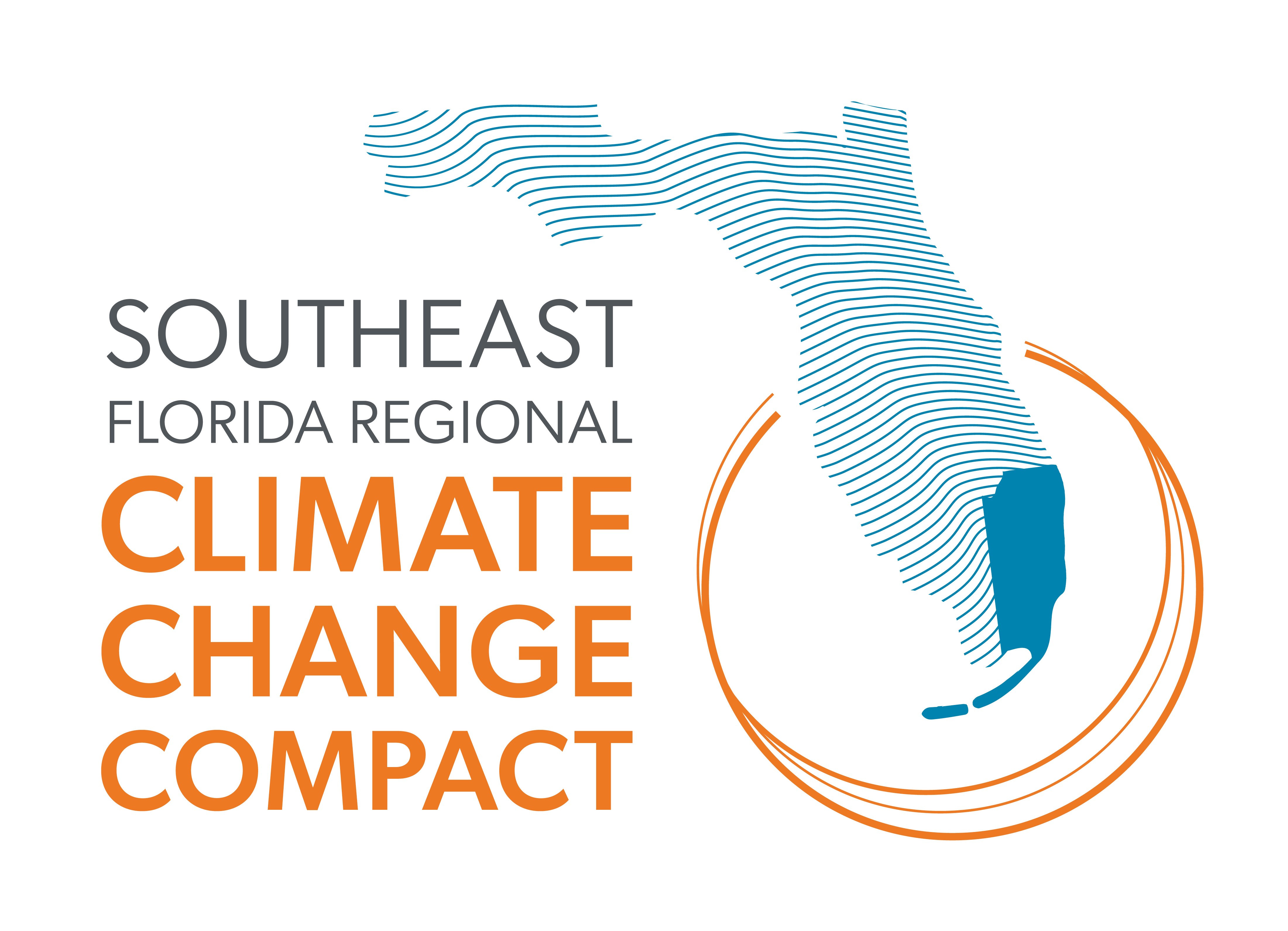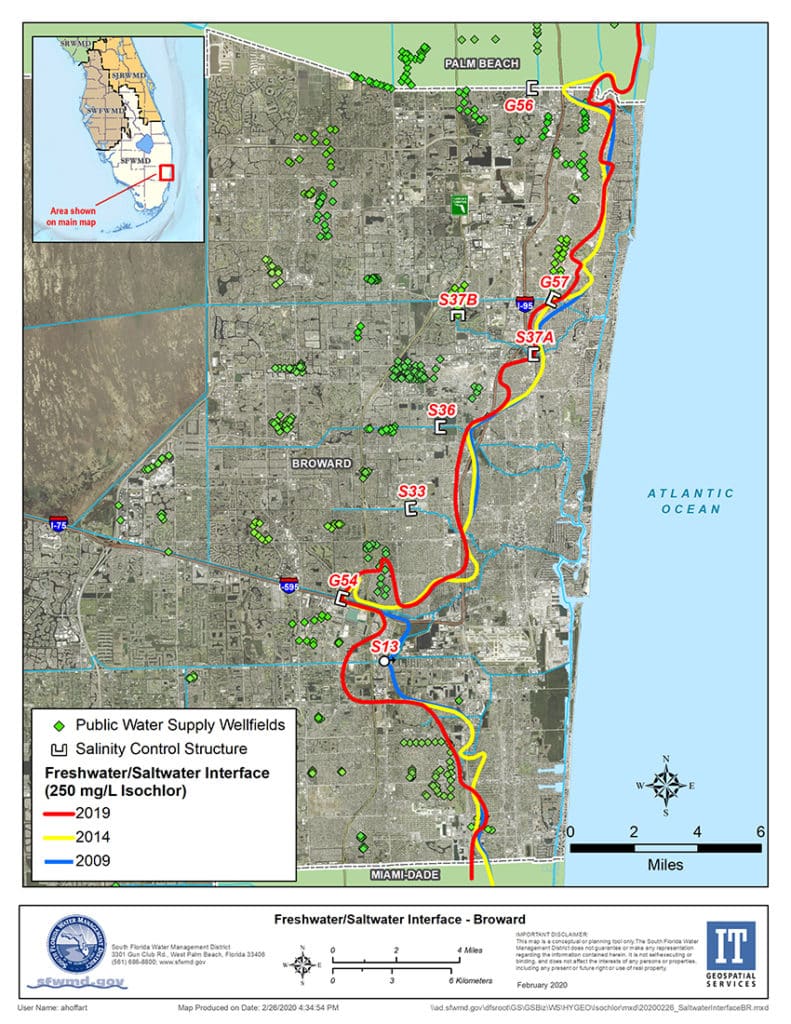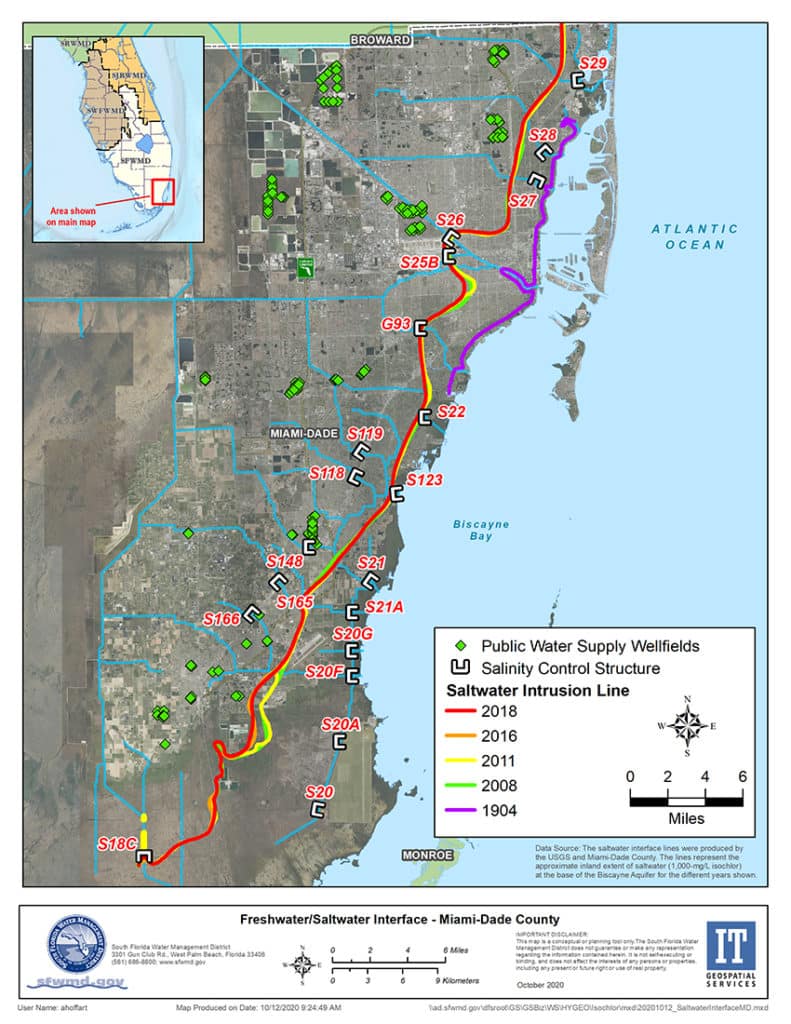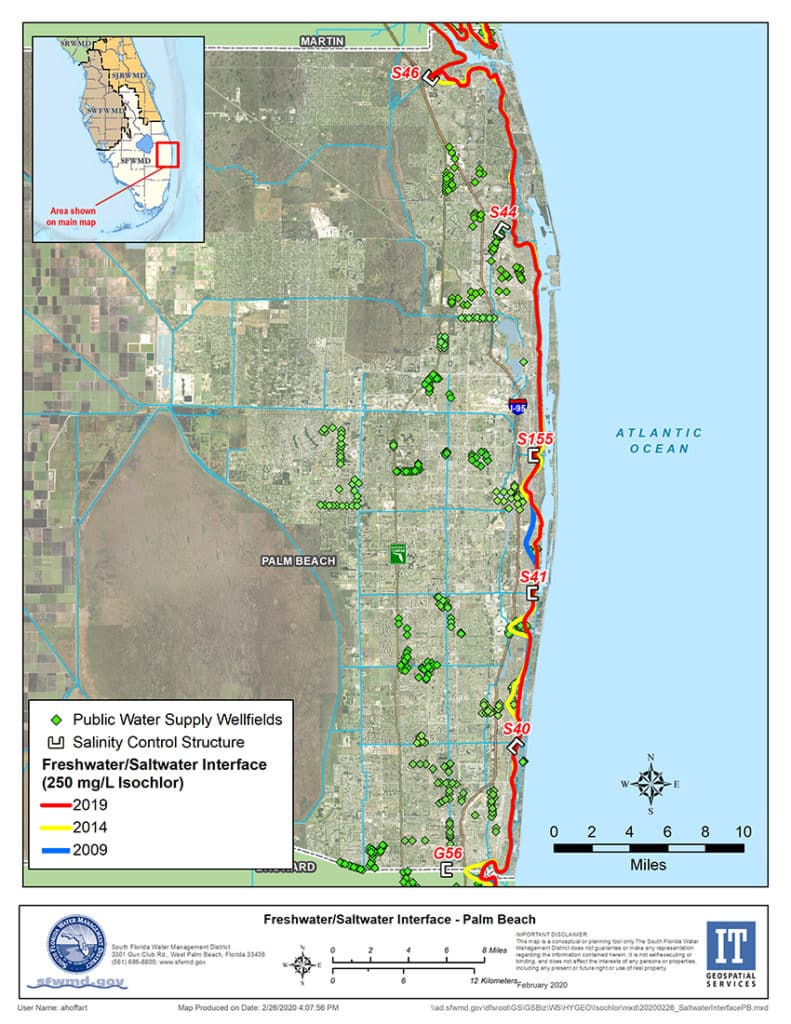
Climate Indicators
Salt Water Intrustion
Saltwater intrusion is caused by either increasing sea levels or a reduction in inland freshwater levels. Saltwater intrusion can lead to contamination of coastal drinking water supplies. Over time, saltwater has continued to intrude inland in South Florida, compromising some well fields. As the sea level rises, further intrusion will occur. The maps show the extent of saltwater intrusion over the period of record from sites monitored in South Florida.
The U.S. Geological Survey (USGS) Water Level and Salinity Analysis Mapper online tool provides automated statistical and graphical analyses on (ground)water-level and salinity data collected from sites monitored by the USGS in South Florida. The tool includes 5- and 20-year trends, illustrating a variety of localized upward and downward trends in the region, as well as the approximate inland extent of saltwater intrusion, since 2011.
Source: Data is from the U.S. Geological Survey and South Florida Water Management District.
Maps are provided courtesy of the South Florida Water Management District, 2020.
Broward County, Freshwater/Saltwater Interface
It is likely that considerable saltwater intrusion occured in Broward County following drainage of the Everglades. By 1945, seawater had already intruded approximately one mile inland in southern Broward County. The construction of salinity control structures since the mid-1950s has been relatively effective in slowing the progression of the saltwater front, though the proximity of some wellfields to the coast continues to lead to salinized wells that generally have to be abandoned. Saltwater intruded inland about 1 mile between 2009 and 2019 west of Fort Lauderdale-Hollywood International Airport near salinity control structure S-13. Sea level rise is likely to contribute to further saltwater intrusion, depending on pumping and water management.
Miami-Dade County, Freshwater/Saltwater Interface
Saltwater intrusion has occurred since drainage of the Everglades and the earliest days of groundwater withdrawal for the population of Miami-Dade County. By 1904 (purple line), several early wells had to be abandoned. However, the construction of salinity barriers in the canals and control of groundwater levels over the years has largely halted the further inland movement of the saltwater front. Little change is seen between the 2011 front (yellow) and 2018 front (red) in most areas. The saltwater front has moved more inland in the southern portion of the County near the Homestead area.
Palm Beach County, Freshwater/Saltwater Interface
Saltwater intrusion has been limited to less than one mile inland in much of Palm Beach County. Comparison of the lines below suggests that the saltwater interface has moved seaward between 2009/2014 and 2019. This is likely due to moving pumping centers further inland and extracting water from the deeper aquifer.










